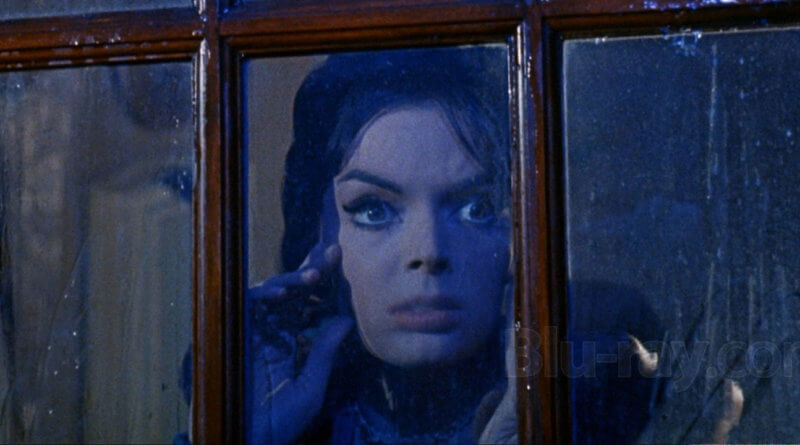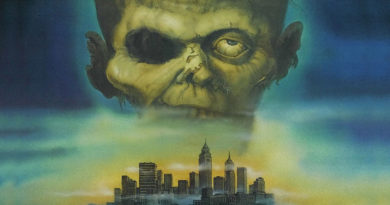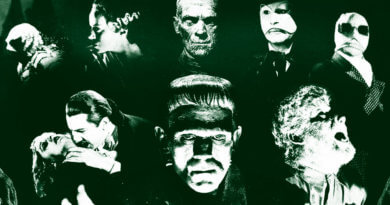Retro Review: The Necrophilia-Themed ‘Terror of Dr. Hichcock’
The world of horror is a big tent — there’s room for all kinds of monsters. Vampires, werewolves, zombies, ghouls — all are welcome. Even a cannibal or two. However, there’s one creature that even the most ardent horror fan still finds repulsive – the necrophiliac, or someone who gets sexual gratification by being intimate with corpses.
The subject matter certainly isn’t everyone’s cup of tea under any circumstances, but daring filmmakers have occasionally turned their cameras to this uneasy topic.
Drive-in audiences were traumatized by 1972’s Love Me Deadly, a combination of bad fashions, shocking sexuality and Lyle Waggoner. Extreme trash 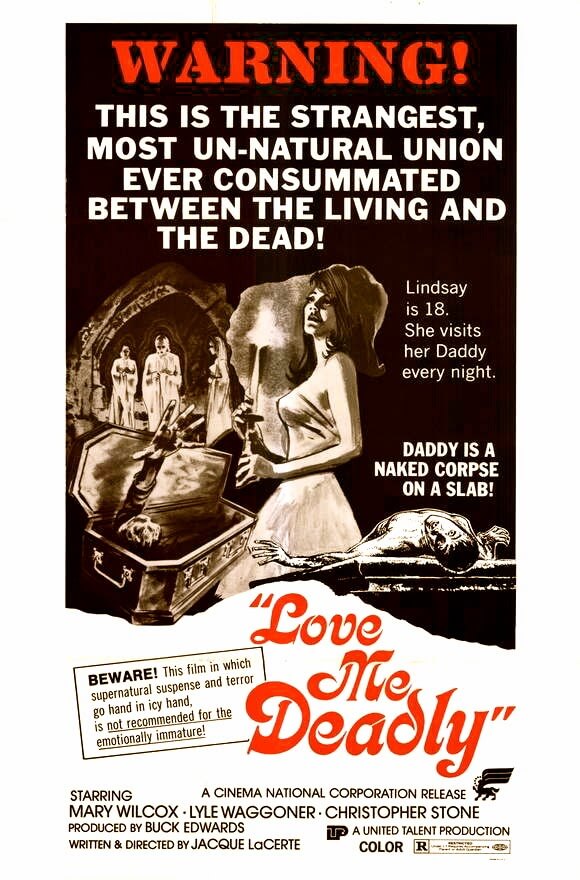 hounds adore German filmmaker Jorg Buttgereit’s gory underground films, including Nekromantik and its sequel, but they’re definitely not for everyone. The first film even has a — ahem — “money shot” that’s best left undescribed.
hounds adore German filmmaker Jorg Buttgereit’s gory underground films, including Nekromantik and its sequel, but they’re definitely not for everyone. The first film even has a — ahem — “money shot” that’s best left undescribed.
There was an art film made in Canada in 1996, Kissed, about a young woman’s attraction to stiffs. I mean real stiffs.
Due to the subject matter, these films are necessarily exploitative, but among these brash shockers there was a little jewel of artistic perversion, surprisingly made wa-a-a-a-a-y back in 1962, six years before Romero’s epoch-making Night of the Living Dead brought graphic realness to American horror cinema.
The Italian director Riccardo Freda’s The Terror of Dr. Hichcock has quite an agenda for a film of its vintage. Made during that country’s gothic golden era spurred on by the master director Mario Bava, it’s a Rebecca-style story that takes necrophilia to the nth level. Interesting that he’s named Hichcock, eh? The filmmakers probably decided to eliminate one “t” in the name to get it close enough for comprehension but not enough for a lawsuit.
In a foggy cemetery, a gravedigger is clubbed senseless by a mysterious figure that then proceeds to open the coffin and fondle the female cadaver inside. We soon learn that the figure is Dr. Bernard Hichcock (Robert Flemyng), a distinguished surgeon whose development of a new anesthetic has taken him to the top of his field. His personal life is another matter, however.
Not only is he drawn to the cadavers in the hospital morgue, he also uses his anesthetic for sex games with his willing wife, Margaretha (Maria Teresa Vianello). The drug puts her into a catatonic state, allowing Hichcock to have his way with — for all intents and purposes — a corpse. One night he goes too far, injecting her with a lethal dose, and can only watch helplessly as she succumbs.
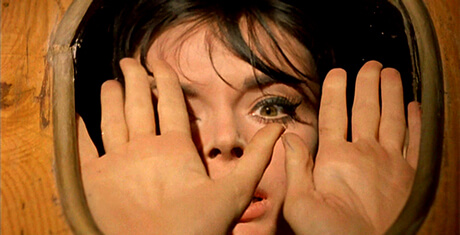
Twelve years later, he returns from Italy with his new wife, Cynthia (genre icon Barbara Steele). Here is where the “Hichcock” in the title comes into play. We’re in Rebecca territory now, complete with a foreboding mansion, a sinister housekeeper (Harriet Medin) and the spectre of Margaretha that seems to cast a shadow over everything. Matters grow more complicated when it is revealed that Margaretha, who is not dead after all but recovered from the overdose, is now an insane hag roaming the dark halls — and she doesn’t want that “other woman” with her husband!
What’s remarkable about Terror, besides its matter-of-fact treatment of the subject matter, is its approach to Hichcock himself. Far from passing a moral judgment, the filmmakers depict Hichcock as something of a sexual pioneer, a man who has not only accepted but embraced his inner necrophile. The contrast between the wives is interesting, too. Margaretha’s excited expression as Hichcock approaches her with the needle parallels the excitement of a junkie. She seems to represent Hichcock’s “liberated” side while Cynthia, cold and withdrawn, is the “safe” wife who will help him repress his urges…but it doesn’t work out that way.
The film is very dreamlike in tone, which some have attributed to a tight shooting schedule that forced some expository scenes to remain unfilmed. Both Steele and Medin acknowledged that Freda would throw away pages of the script to stay on schedule. Nevertheless, it works, and some critics embraced it as a surrealist masterpiece. Loaded with gothic atmosphere and complemented by a lush score, The Terror of Dr. Hichcock is a lyrical examination of one of society’s biggest taboos.
Freda made a sequel of sorts, The Ghost, also with Steele. Here, Hichcock is the wheelchair-bound husband whom Steele plots to kill with the aid of her lover.
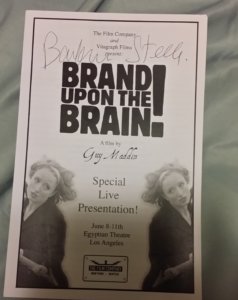 I actually got to meet Barbara Steele in L.A. when she was narrating a performance of crazy great Winnipeg filmmaker Guy Maddin’s Brand Upon the Brain!. He was touring it around the country. It was intentionally shot silent, so it required a narrator, a small orchestra and sound effects professionals to bring it to life.
I actually got to meet Barbara Steele in L.A. when she was narrating a performance of crazy great Winnipeg filmmaker Guy Maddin’s Brand Upon the Brain!. He was touring it around the country. It was intentionally shot silent, so it required a narrator, a small orchestra and sound effects professionals to bring it to life.
At the Egyptian Theater, the narration was performed on different days by his muse, Isabella Rossellini, the late great Eli Wallach and Steele.
I lucked out! I got to see Steele, my cult heroine! When she left the stage, I saw other people running to the exit and followed them on a whim. Sure enough, she was holding court and signing autographs. When it was my turn, I babbled something inane about how much I loved her. She smiled, looked at me with her wild eyes and took the pen from my hand to sign the program. I’ll never forget it.
Here’s a Hichcock trailer I put together using material from Sinister Cinema‘s source print. Rather than take a modern approach, I cut it in the style of old school television spots.

